7 Dusty Miller Varieties for Your Ornamental Garden
Author: Jen Worst | Editor: Omar Alonso
Review & Research: Jen Worst & Chris Miller

If you’re looking for a great plant to add as foliage to your garden, look no further than the many dusty miller varieties. Though, the unusual name could easily lead to a case of mistaken identity, these plants are really special in appearance.
Also known as “silver dust” and “silver ragwort”, Jacobaea maritima (or Senecio cineraria, as it is also called) is a perfect, neutral foil for the riot of colors that flower beds can become, especially in the summer months.
7 Dusty Miller Varieties
Its gorgeous silver leaves can perfectly complement any flower, which is why many gardeners are opting to incorporate this plant into their gardens. If you’re considering welcoming dusty miller into your garden, here are the seven major types to consider.
White Diamond Dusty Miller
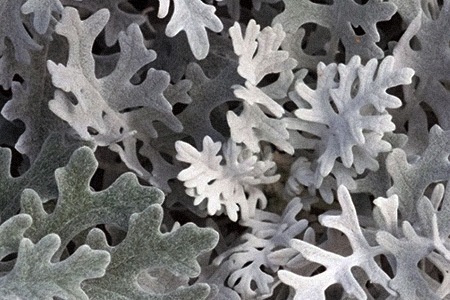
The White Diamond variety of the dusty miller family has whitish-gray, medium-sized leaves that can reach up to 12 inches in width and 16 inches in length, and the plant itself can grow a foot wide and up to a foot in length.
White Diamond types of dusty miller are perennial plants, growing and flowering throughout the year. The dusty flowers are a gorgeous mustard-yellow hue, adding a pop of color to an otherwise monochromatic plant. To help balance some of that, growing these alongside some types of eucalyptus can thicken up this winter-looking backdrop to help the color splashes stand out even more.
This variety of dusty miller requires full, direct sunlight and well-drained, enriched soil with regular fertilizing (organic, water-soluble fertilizer should be used as far as possible). They look great as border or edging plants, especially when they hit the flowering phase between late summer and early autumn.
The soil should always be moist with water evenly spread so that there are lesser chances of overwatering and subsequent plant rot.
The White Diamond variety belongs to the Asteraceae family (also known as Compositae) and is scientifically known as Chrysanthemum cineraria folium.
New Look Dusty Miller
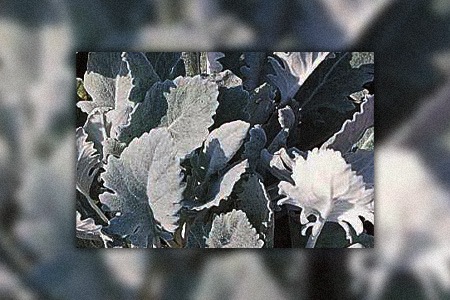
Named for its distinctly different appearance from other members of the dusty miller family, New Look, unlike other dusty miller varieties that feature smooth, shiny, silvery-white leaves, features rough leaves with silver edges, thick and tall stems, and a highly resilient nature—the more you pick the plant, the more the growth.
This variety is quite fast-growing, maturing about four months into its lifespan. Like all types of dusty miller plants, the New Look variety is also a perennial plant, growing and blooming throughout the year, and requiring full sun for proper growth.
The plant can reach a maximum height of 18 inches and a maximum width of 12 inches. It also needs sufficient space to grow and breathe, which is why this plant’s closest neighbor should be at least 12 inches away on all sides.
The New Look dusty miller variety also braves the cold quite well and the ideal seed-sowing time is around 10 or 12 weeks prior to the onset of the last frost. Come summer, you’ll see dainty yellow flowers blooming; you can snip these if you want the plant to grow more foliage.
New Look dusty miller plants are also drought tolerant. They develop this characteristic around 60 days from the day of planting, so while you will need to water it at least bi-weekly in the first couple of months (watering at the bottom to ensure the roots get sufficient water), you can reduce the frequency after the second month.
Though fertilizer is not a necessity, a time-release fertilizer, applied during planting, may help the plant stay healthy.
If you don’t see a silver hue in the seeds, don’t worry! The signature silver shade only appears after the plant has matured. While New Look is great as foliage, it’s equally beautiful when used in container plantings and in a fresh-cut flower arrangement.
Silver Lace Dusty Miller
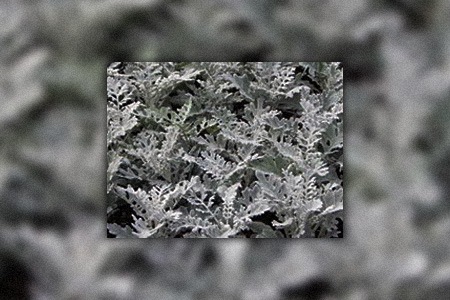
Aptly named because it shares the same delicate nature as lace, this dusty miller variety is the most fragile.
Prized as and grown for foliage (though it bears fruits and dusty flowers, these are not decorative), this close-packed plant is great in pots and borders, favored for the gorgeous fern-like texture and the lovely white shade of the leaves. Silver lace is also sometimes referred to as mugwort, sage, and beach wormwood.
These plants don’t reach great heights, restricted to around seven inches at full growth. They can reach a width of around 8 inches when fully mature, but they can take quite a while to reach maturity as they are quite slow growing.
Silver lace plants require full sunlight and flourish in dry soil, growing upright. These perennial plants are resistant to deer but will require regular pruning and fertilizing for proper, healthy growth, unlike most other dusty miller varieties.
Silver lace plants are the perfect complement to plants such as cornflowers, gayfeather, types of coleus, and garden phlox, with vividly colored flowers in the blue and purple palette. You can also use it to cover the ground.
If you’re growing this variety for foliage, picking off the dusty flowers will encourage the healthier growth of the plant. The primary growing phase is during the spring months, so planting a few weeks before the onset of the season will help the plant’s life cycle coincide with the warm months.
Silver Filigree Dusty Miller
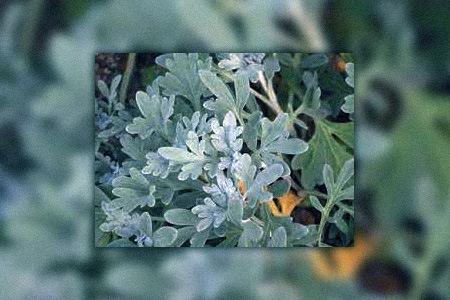
Silver filigree is named for the beautiful, intricate pattern of its silver leaves. It is also sometimes referred to as “silver cascade”.
This annual plant is quite a short one like the silver lace variety, only reaching up to a maximum of eight inches at maturity. However, many folks favor this height as it makes the plant, which requires frequent pruning, quite easy to prune and maintain.
Silver filigree types of dusty miller plants require direct sunlight, ideally over six hours of it, for proper, healthy growth. Their water requirements are not too high; these plants are quite hardy, requiring only the average amount to prosper.
The silver color of the leaves makes this plant an ideal ornamental addition to flower beds as bordering plants, as well as in landscaped gardens and containers. The width is quite considerable though, spanning between 12 and 14 inches.
Cirrus Dusty Miller
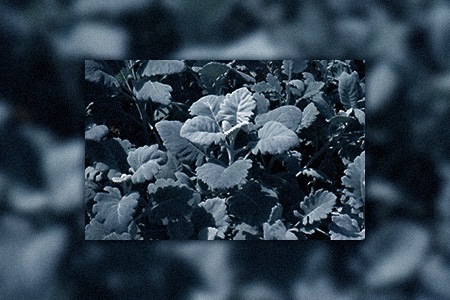
With round, large, silvery-white leaves that look like clouds (hence, the name), cirrus plants are quite hardy, able to withstand extreme cold and heat. Along with their perennial nature, this makes them a great option for those looking for foliage options that are in bloom throughout the year.
Cirrus is also known scientifically as Centaurea cineraria. The plant grows upright and can reach a maximum height of a foot, with the maximum width being double the height.
The chief blooming period is during the summer months, with the temperatures and direct sunlight between early and late summer ideal for the plant’s growth. When the plant flowers, the garden can enjoy gorgeous additions in the form of lovely little yellow, button-shaped flowers.
For soil, clay loam or sand, with a pH level being a minimum of 5.5 and a maximum of 7.5, are healthy for the plant. The plant requires sufficient air circulation to grow well, which means that the nearest plant should be 16 inches away from your cirrus on all sides.
Cirrus plants are resistant to deer. These dusty miller varieties require average amonuts of water and they don’t require frequent pruning, either. You can add the cirrus plant to hanging pots, flower-bed borders, and containers.
Don’t be discouraged by slow growth; cirrus plants grow at a medium rate, but they can last for as long as ten years with the proper care and maintenance. Consider how they might go well together growing along side some polka dot plant varieties.
Ramparts Dusty Miller
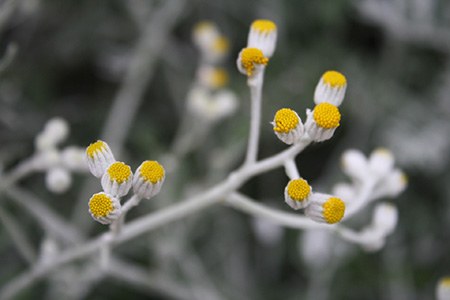
Ramparts are among the low-maintenance members of the dusty miller family. They’re extremely easy to grow and only require the bare minimum maintenance, care, and conditions to thrive (such as moist, well-drained soil and direct sunlight).
Silver Dust Dusty Miller
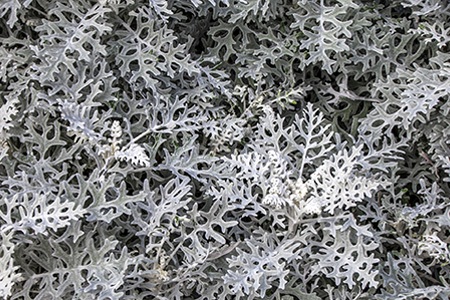
Rounding off our list is the dusty miller silver dust variety, known scientifically as Senecio cineraria. It is perennial in USDA Hardiness Zones 7 through 10, but can be grown in colder climates as well.
This plant, also sometimes referred to as silver ragwort, features leaves that are more delicate than the Cirrus variety, as well as a more intense shade of silver. The plant grows a maximum of ten inches in height and is typically the same width, too.
The leaves of the silver dust variety have a beautiful snowflake shape; with their gorgeous coloring and shape, these plants are highly favored by gardeners and a foliage favorite in flower beds.
Growing silver dust types of dusty miller is easy; this is a low-maintenance plant that can brave drought well, needing only average amounts of water to thrive. It does, however, require ample direct sunlight and moist, well-drained soil to grow well. Water stagnating around the base of the plant can quickly lead to plant rot and the plant’s eventual death.
To improve growth in your silver dust plant, you can occasionally trim the stems and pick off the dusty flowers. Additionally, ensure that at least eight inches stand between your silver dust plant and other plants, as ample space for the roots to grow and sufficient airflow and circulation are necessary for good growth.
Dusty Miller Varieties for an Easy Garden
Dusty miller plants are great to have in your garden. They're mostly low maintenance and hardy with low water requirements and basic growing conditions. You don’t need to invest a lot of time, effort, or money looking after these plants; with just the bare minimum, you can see any dusty miller varieties thrive and enhance the look of your garden.



